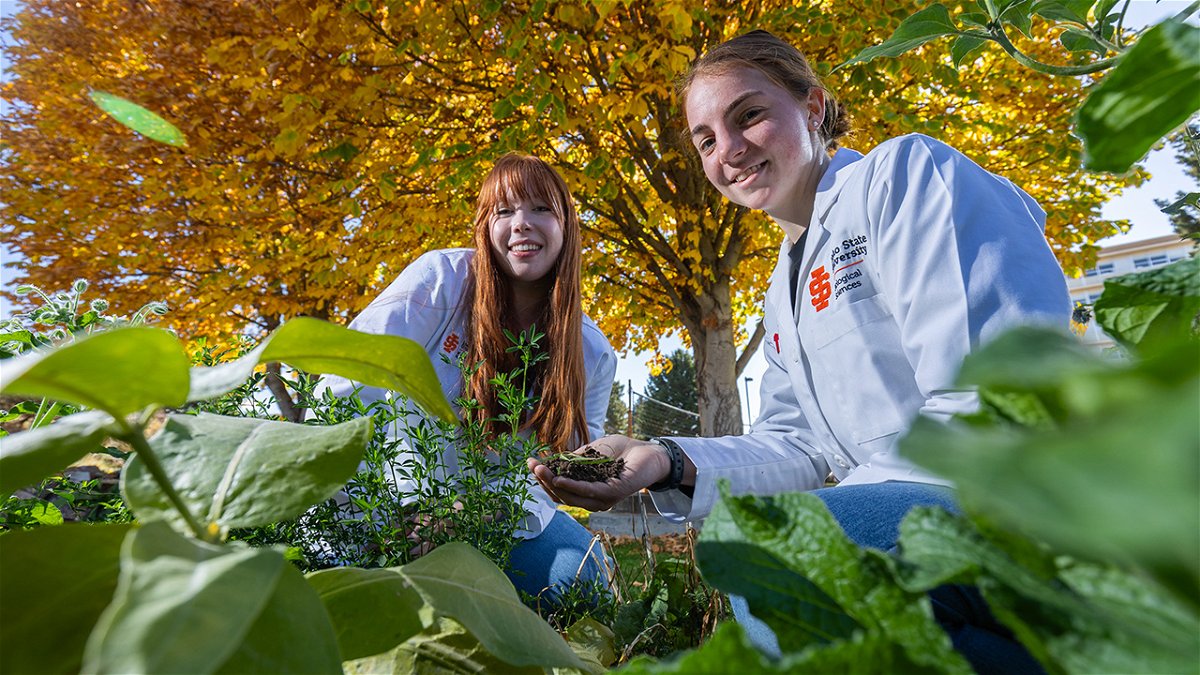Viruses discovered by ISU students may yield new treatments for antibiotic-resistant bacteria

POCATELLO, Idaho (KIFI) – There’s a KillerTomato lurking on the grounds of Idaho State University. Not to fear, though, this cold-blooded killer is only looking for victims of the bacterial variety.
Discovered by students in ISU’s Bacteriophage Discovery and Genomics class, bacteriophages like KillerTomato are viruses that wield their genetic information like a weapon to infect bacteria. Phages - as they’re more informally referred to - are one of the most common biological entities in the world and can be found anywhere bacteria reside.
“Phages are exceptionally efficient killers,” said Michael Thomas, professor in the Department of Biological Sciences and an expert in bacteriophage biology and genomics. “They find a host bacterium, turn the bacterial cell into a virus factory, and then thousands of new viruses burst out. Sometimes, for good measure, they pick up a bacterial gene or two to take to their next host.”
The phage's omnipresence around the globe makes it a good target for the Bacteriophage Discovery and Genomics class. Started in the fall of 2021 at ISU and currently being taught by Thomas, Anna Grinath, associate professor, and Jack Shurley, senior lecturer, the class takes students through every step of the phage identification process.
“This class is designed as an introduction to research,” said Emily Sullivan, a junior majoring in biology with a concentration in medical sciences. “It gives you the tools to enter another lab with some experience.”
“Most students in the class have no prior experience in microbiology, lab sciences, bioinformatics, or research,” Thomas said. “The class is designed to help incoming students find a home in the department and a career pathway in the sciences. Finding your path in science can be difficult and scary, and this class helps students become part of a team that walks that path together.”
The students begin by collecting a soil sample and progress through different microbiology techniques to identify phages contained in the soil. The tadpole-looking phage that eventually earned the name KillerTomato was found outside ISU’s Plant Sciences building and near a tomato garden. Over two semesters, students get hands-on opportunities to use transmission electron microscopes, perform DNA isolation and sequencing, work with bioinformatic tools, and more.
“I really enjoy the problem-solving involved in both semesters of this class,” explained Sariah Hepworth, a senior majoring in microbiology. “The best part is that this is a very collaborative and student-led class; as students, we got to turn to each other and be very involved as a team in coming up with solutions.“
After the genome of a phage is sequenced, students find out if the phage they’ve found has not yet been discovered. If the phage is new - like KillerTomato - students author a peer-reviewed publication for a scientific journal.
“We all worked very hard, and as a team, we have produced a product that I am so proud of,” Sullivan said. “The paper makes me feel confident about applying to medical school because I have a representation of the research that I feel passionate about, and now I can share it with others.”
KillerTomato’s complete genome was also entered into the National Center for Biotechnology Information (NCBI) databases that are used by the medical and research communities.
“The students recognize that they are doing really important work,” said Thomas. “The NCBI archives contribute to discoveries that will help bacteriophages supplement antibiotics that are becoming less effective due to antibiotic-resistant strains of bacteria. Antibiotic-resistant bacterial strains actually lose their ability to resist antibiotics when they're busy fighting off a phage, so clinicians are finding the best approach is a cocktail of phages plus some front-line antibiotics.”
Looking ahead, the findings on another phage discovered by the class, SallyK, are set to be published soon, and this academic year’s cohort may notch two more publications on another two phages.
“It's been such a positive experience to connect with others through this class,” Hepworth said. “It’s helped me be more comfortable with the unknown and be able to collaborate with others to work towards solutions and answers.”
